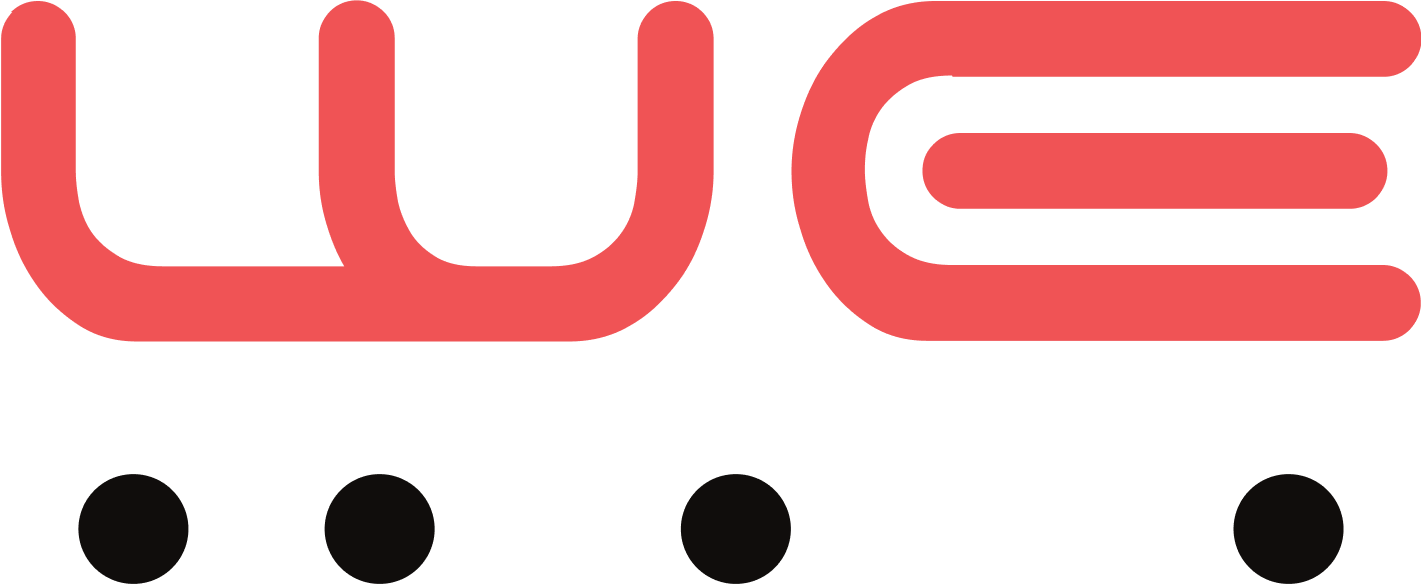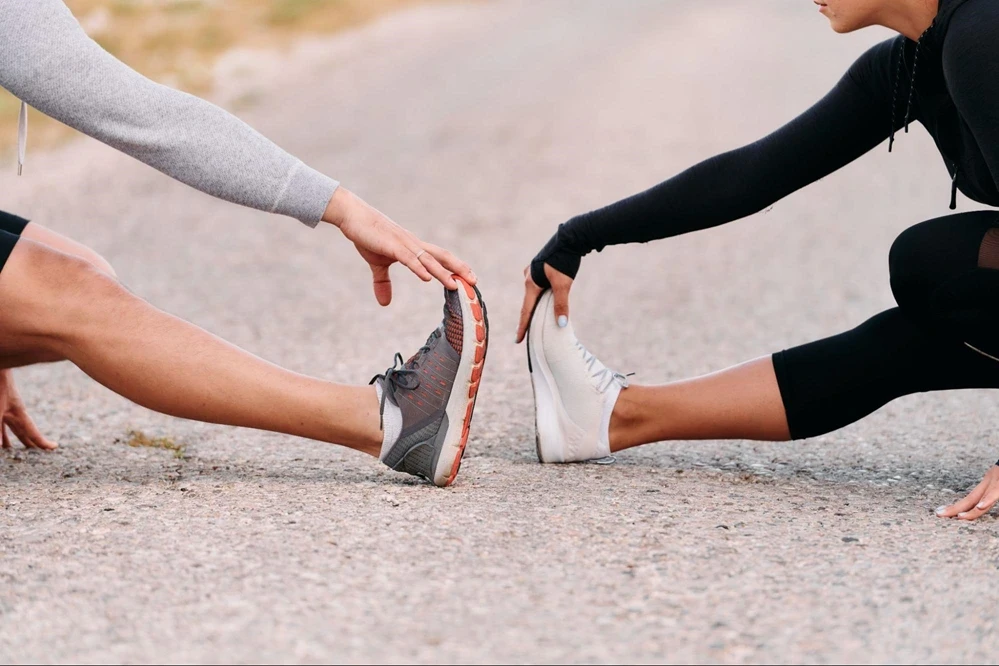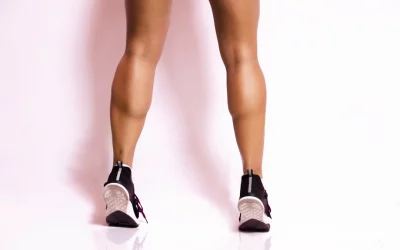After a workout, your muscles are feeling the burn, and while it might feel good at the moment, the soreness that follows can be a whole different story. That’s where a solid recovery stretch routine comes in—think of it as a little TLC for your hardworking muscles.
By giving your muscles a good stretch post-exercise, you’re not only easing tension but also boosting flexibility and helping prevent that “why-does-everything-hurt” feeling the next day. Recovery stretching can do wonders to reduce soreness, speed up recovery, and make your next workout feel a bit less brutal.
In this article, we’ll dive into some of the best recovery stretches for flexibility and relaxation. So, whether you’re tackling leg day or a full-body workout, these stretches have got your back (and hips, and hamstrings). Get ready to stretch your way to faster recovery and better flexibility!
The Role of Recovery Stretching in Muscle Health
Recovery stretching is more than just a cooldown—it’s essential for keeping your muscles in top shape. After a tough workout, muscles can feel tight and sore, but stretching helps release this tension, boosts blood flow, and speeds up recovery.
Physically, regular recovery stretching enhances flexibility and lowers your risk of injury. The looser and more flexible your muscles, the less likely they are to strain during daily movements or future workouts.
Plus, there are mental benefits, too. Stretching promotes relaxation, helping you unwind and shake off post-workout fatigue, so you feel refreshed and ready for what’s next.
Need help to stay consistent? With WeStretch, you can get a tailored recovery plan guided by virtual coaches Ada and Bruce, ready to support your flexibility and recovery goals.
Essential Recovery Stretches for Flexibility and Relaxation
Hamstring Stretch
The Hamstring Stretch is a simple yet effective move to release tension in the back of the legs, which often builds up after intense leg workouts. This stretch promotes flexibility and eases post-exercise tightness.
This stretch is particularly beneficial as it helps:
-
Boost leg flexibility for a greater range of motion and ease in daily activities.
-
Release built-up tension in the hamstrings and lower back for lasting relief.
-
Promote smoother, more fluid movement, making every step feel lighter and more comfortable.
To perform the Hamstring Stretch, follow these steps:
-
Stand with your feet hip-width apart.
-
Extend one leg forward, placing your heel on the ground and toes pointed upward.
-
Gently hinge at the hips, leaning forward toward your extended leg while keeping your back straight.
-
Hold for up to 30 seconds, then switch to the other leg.
Hip Flexor Stretch
The Hip Flexor Stretch is ideal for relieving tightness in the hips, especially after workouts that heavily engage the lower body. This stretch targets the hip flexors, enhancing mobility and reducing strain on the lower back.
This stretch is especially beneficial as it helps:
-
Enhance hip mobility to relieve lower body tightness and tension.
-
Alleviate stress on the lower back for added comfort and stability.
-
Expand the range of motion, supporting faster recovery and smoother movement.
To perform the Hip Flexor Stretch, follow these steps:
-
Begin kneeling on the floor, with one knee down and the other foot forward to form a 90-degree angle.
-
Engage your core and gently press your hips forward, keeping your torso upright.
-
Feel the stretch in the front of the hip on the kneeling leg.
-
Hold for up to 30 seconds, then switch sides.
Seated Forward Fold
The Seated Forward Fold is a relaxing stretch for the hamstrings and back, making it an excellent addition to any post-workout recovery. This pose promotes relaxation and eases lower back tension.
This stretch is particularly beneficial as it helps:
-
Gently stretch the hamstrings and release tension in the lower back.
-
Soothe the nervous system, fostering a relaxed, peaceful state.
-
Enhance spine flexibility, supporting fluid and comfortable movement.
To perform the Seated Forward Fold, follow these steps:
-
Sit on the floor with both legs extended straight in front of you.
-
Reach forward toward your toes, keeping your back as straight as possible.
-
Hold the stretch for up to 30 seconds, focusing on deep breathing.
Downward Dog Stretch
The Downward Dog Stretch is a full-body stretch that relieves tension in the back, hamstrings, and calves. This yoga-inspired pose promotes flexibility and circulation, making it perfect for recovery.
This stretch is especially beneficial as it helps:
-
Relieve built-up tension in key areas like the legs and back.
-
Boost blood flow for faster, more effective muscle recovery.
-
Increase flexibility and support better, more aligned posture.
To perform the Downward Dog Stretch, follow these steps:
-
Begin on all fours, with your hands shoulder-width apart and knees hip-width apart.
-
Lift your knees off the ground, straightening your legs as you press your hips upward and back.
-
Keep your hands and feet grounded, forming an inverted “V” shape with your body.
-
Hold for up to 30 seconds, breathing deeply.
 Cobra Stretch
Cobra Stretch
The Cobra Stretch is excellent for opening up the abdominal muscles and stretching the spine. This stretch helps relieve tension after core workouts and promotes spinal flexibility.
This stretch is particularly beneficial as it helps:
-
Loosen tight abdominal muscles, easing post-workout stiffness.
-
Enhance spinal flexibility, supporting a full range of motion.
-
Encourage an open chest position, fostering relaxation and calm.
To perform the Cobra Stretch, follow these steps:
-
Lie on your stomach with your hands placed under your shoulders.
-
Press through your palms, gently lifting your chest off the ground.
-
Keep your elbows close to your sides and extend through the spine.
-
Hold for up to 30 seconds, breathing deeply as you feel the stretch in your core and back.
Adding these essential stretches to your routine can boost flexibility, ease tension, and promote muscle recovery. For a personalized experience, try a recovery stretch plan with WeStretch—virtual coaches Ada and Bruce can create routines tailored just for you.
Exercise Smarter with WeStretch: Your All-in-One Stretching Assistant
A consistent full-body stretching routine is essential for improving flexibility, supporting injury prevention, and enhancing overall well-being. Carefully following simple yet effective stretches targeting the hamstrings, hip flexors, back, quads, chest, and shoulders, individuals of any fitness level can reap the benefits.
Regular stretching, with attention to proper form and consistency, can help you move more freely, recover faster, and feel better in everyday activities.
Looking for a way to add some fun to your stretching routine? Check out WeStretch—an app that’s like your own personal stretch coach! With tailored plans, easy-to-follow demos, and progress tracking, it’s got everything you need to keep you limber and on point. Ready to get flexible? Sign up today and let’s get stretching!
 FAQ
FAQ
What is a recovery stretch routine?
A recovery stretch routine is a series of gentle stretches designed to help your muscles relax, reduce post-workout tension, and boost flexibility. It’s especially helpful after intense exercise, as it promotes blood flow, speeds up muscle recovery, and eases soreness, preparing you for your next workout with less discomfort.
How often should I do a recovery stretch routine?
Ideally, a recovery stretch routine should be done after every workout to prevent stiffness and aid in muscle recovery. Even dedicating a few minutes after exercise helps improve flexibility and reduces soreness, making it easier for your muscles to recover and perform better during your next workout.
Which stretches are best for post-workout recovery?
Effective post-workout stretches include the Hamstring Stretch, Hip Flexor Stretch, Seated Forward Fold, Downward Dog, and Cobra Stretch. Each targets key muscle groups that are prone to tightness, helping you reduce soreness and improve flexibility while supporting overall muscle health and recovery after exercise.
Can stretching improve flexibility and reduce soreness?
Yes, stretching helps lengthen muscles, which improves flexibility and reduces the risk of stiffness. Recovery stretching promotes blood flow to sore muscles, which can help flush out lactic acid buildup, easing soreness and enhancing overall recovery. Regular stretching also supports joint mobility, making everyday movements smoother and more comfortable.
How can WeStretch help with my recovery stretch routine?
WeStretch offers customized recovery stretch routines guided by virtual coaches Ada and Bruce. With personalized plans, easy-to-follow demos, and progress tracking, WeStretch helps you stay consistent, improve flexibility, and support muscle recovery effectively, making it a valuable tool for achieving your recovery and fitness goals.






